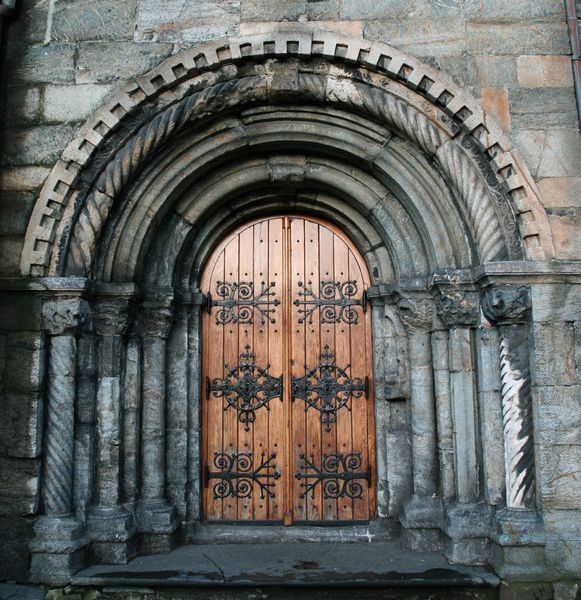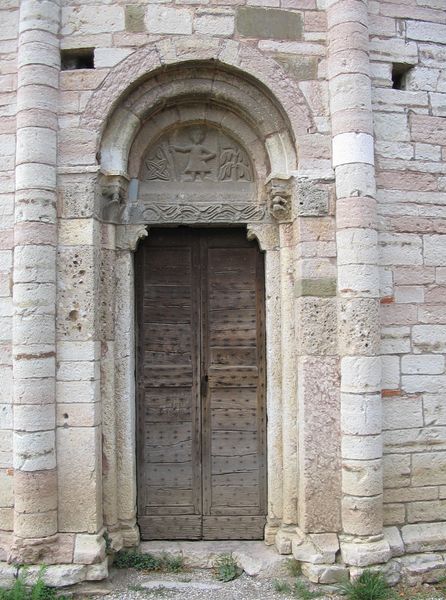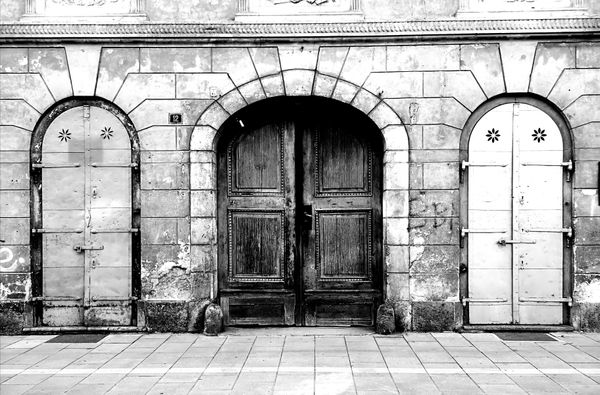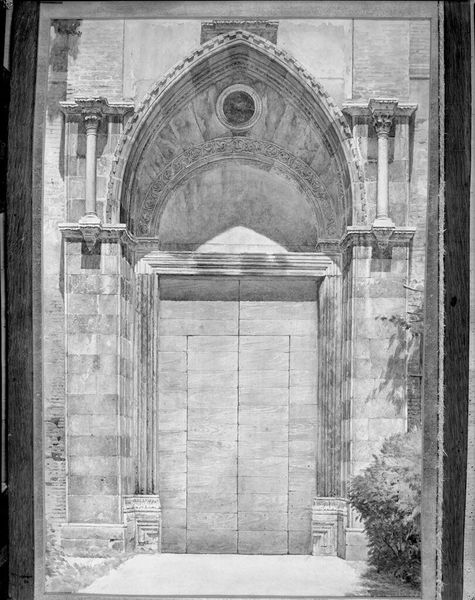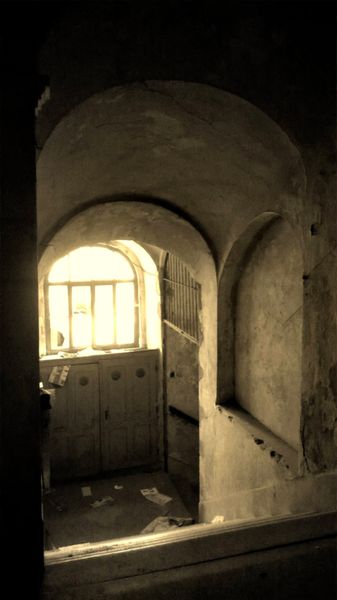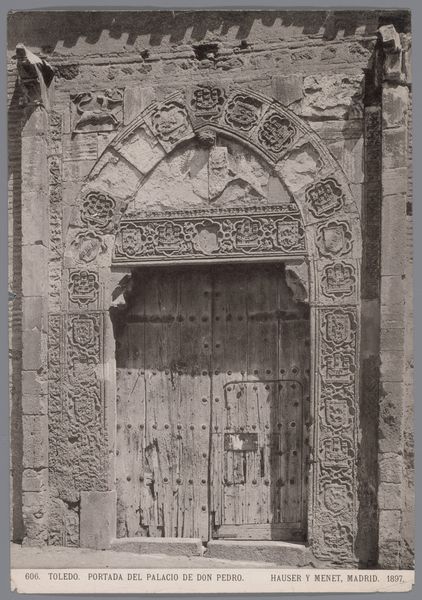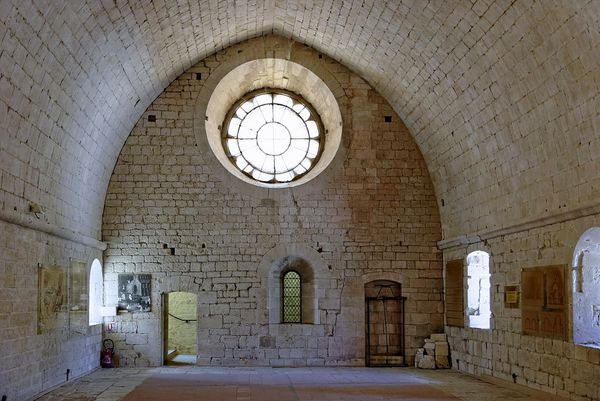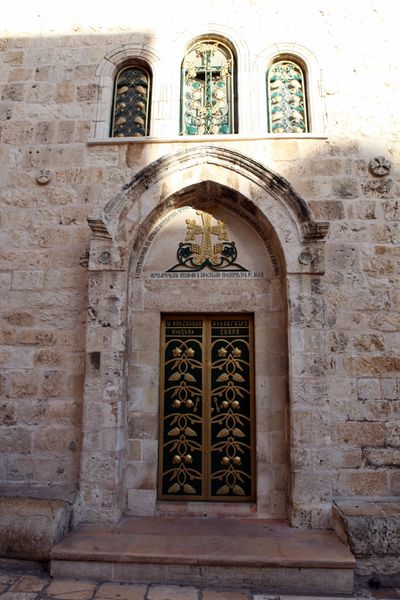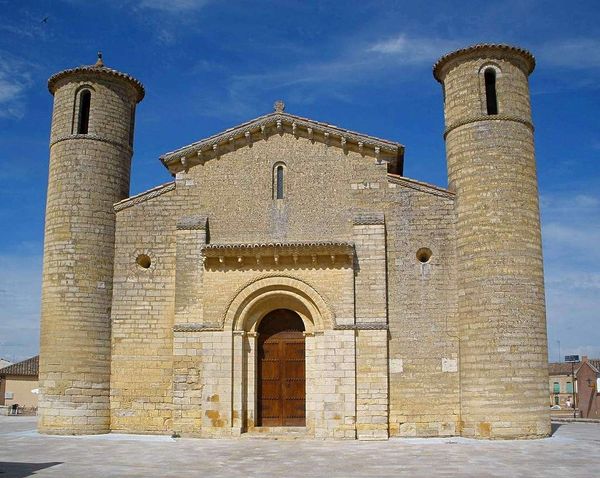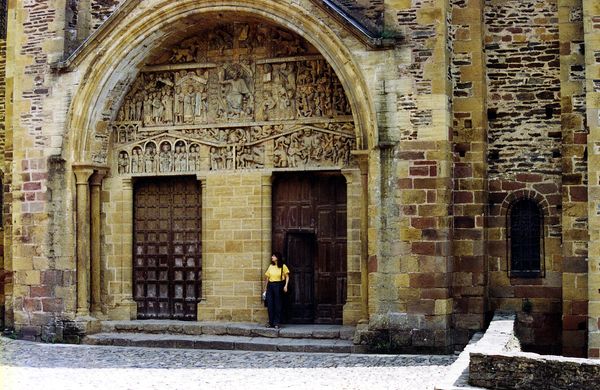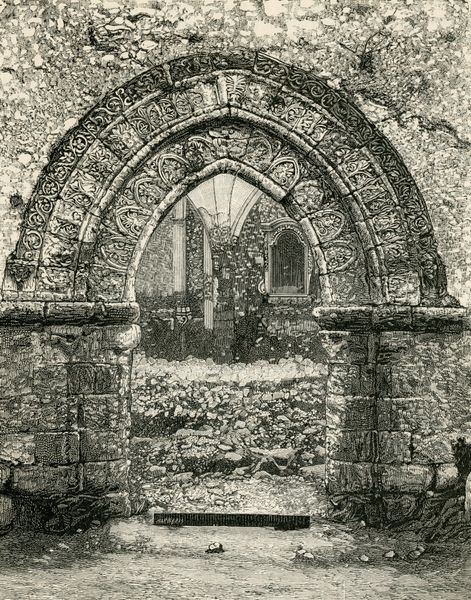
carving, architecture
#
medieval
#
carving
#
sculpture
#
historic architecture
#
romanesque
#
arch
#
architecture
Copyright: Public domain
This is a portal of the Church of Santa Maria, located in Viu De Llevata, Catalonia, Spain, made out of stone during the Romanesque period, between the 11th and 13th centuries. The Romanesque era was deeply influenced by the social structures of feudalism and the pervasive role of the Church. The architecture, like this portal, played a crucial role in shaping and reflecting the identities of the communities that built and used these spaces. Consider the emotional experience of entering this sacred space centuries ago. Romanesque portals often served as a transition from the secular world to the divine, from everyday life to the house of God. This stone opening, with its layers of carved arches and sturdy columns, embodies a sense of strength and permanence. Religious architecture was key in defining community identity and collective values. While the stonemasons and builders are anonymous, their work stands as a testament to their skill and faith. In considering this portal, we can see how it was designed to inspire awe and reverence, thus reinforcing the societal structures and spiritual beliefs of the time.
Comments
No comments
Be the first to comment and join the conversation on the ultimate creative platform.

